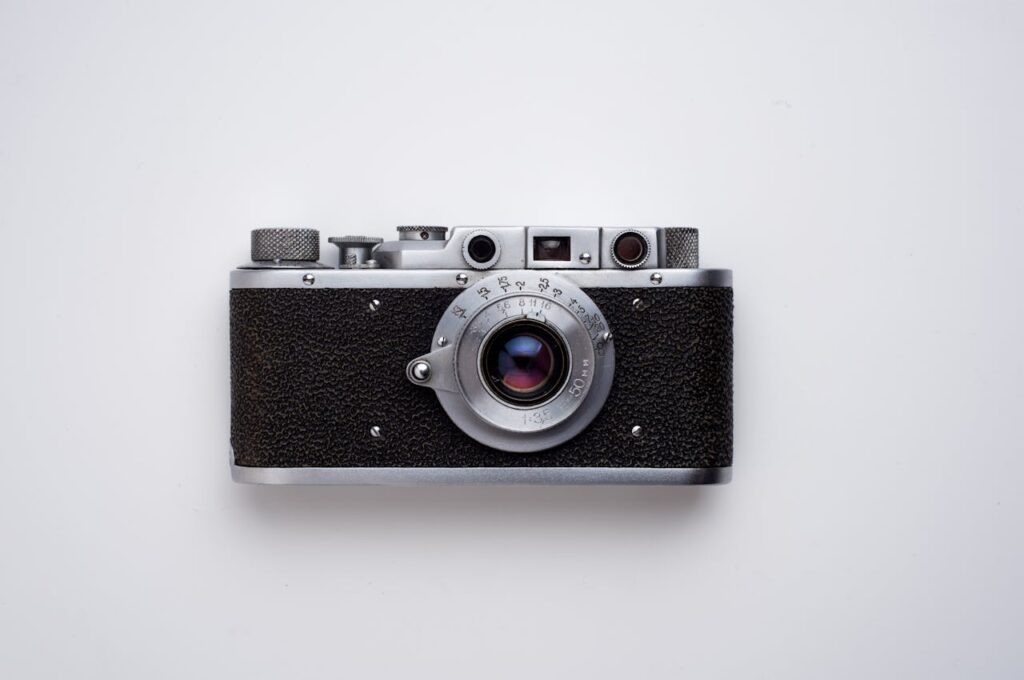Photography has undergone a remarkable transformation since its inception, evolving through various technological advancements that have reshaped how we capture and perceive images. Here’s a look at this evolution, highlighting key milestones and the implications of each shift.
1. The Birth of Photography (Early 19th Century)
- Invention of the Camera Obscura: The concept dates back to ancient times but was refined in the early 1800s. The camera obscura projected images onto a surface, paving the way for photography.
- Daguerreotype (1839): Louis Daguerre introduced the first practical photographic process, which produced a single image on a silver-coated copper plate. This method required long exposure times and was sensitive to light.
2. The Era of Film (Late 19th to Mid-20th Century)
- Flexible Film (1888): George Eastman introduced the Kodak camera with flexible roll film, making photography accessible to the masses. This marked a significant shift toward snapshot photography.
- Color Photography (1935): The introduction of Kodachrome film allowed photographers to capture vibrant colors, expanding creative possibilities and influencing art and advertising.
3. The Rise of Digital Photography (Late 20th Century)
- Digital Sensors (1980s): The development of CCD (Charge-Coupled Device) sensors allowed for the conversion of light into electronic signals, leading to the first digital cameras.
- Early Digital Cameras (1990s): The first consumer digital cameras emerged, offering lower resolution but the convenience of instant review. This marked the beginning of the digital revolution.
4. The Digital Revolution (2000s)
- DSLR Dominance: Digital Single-Lens Reflex (DSLR) cameras became popular among both amateur and professional photographers, providing high-quality images and interchangeable lenses.
- Smartphones (2007 Onwards): The launch of the iPhone and subsequent smartphones revolutionized photography. With built-in cameras and easy sharing via social media, photography became ubiquitous and democratized.
5. The Age of Social Media (2010s)
- Instant Sharing: Platforms like Instagram transformed how images are shared and consumed. Photography became not just an art form but a significant part of social interaction and branding.
- Mobile Photography: As smartphone cameras improved, mobile photography emerged as a popular genre, leading to the rise of influencers and mobile-centric visual storytelling.
6. Emerging Technologies (2020s and Beyond)
- Mirrorless Cameras: These lightweight cameras offer high performance without the bulk of traditional DSLRs, appealing to both enthusiasts and professionals.
- AI and Computational Photography: Advances in artificial intelligence enhance image quality, enabling features like portrait mode, night photography, and real-time editing. Software can analyze and adjust images automatically, altering traditional photography processes.
- Virtual Reality (VR) and 360-Degree Photography: These technologies provide immersive experiences, allowing viewers to engage with photography in new ways, such as virtual tours and interactive storytelling.
Implications of the Evolution
- Accessibility: The evolution of photography has made it accessible to a wider audience. Anyone with a smartphone can capture and share high-quality images, leading to a global culture of visual storytelling.
- Creative Expression: Technological advancements have expanded creative possibilities, allowing photographers to experiment with new techniques, styles, and formats.
- Cultural Impact: Photography continues to shape culture, politics, and social movements. The ability to instantly capture and disseminate images has profound implications for journalism, activism, and personal expression.
Conclusion
From the early daguerreotypes to the latest smartphone innovations, the evolution of photography reflects broader technological changes and societal shifts. As we move forward, emerging technologies promise to further transform the way we capture, share, and understand images, continually redefining the art and practice of photography. The journey of photography is far from over, and each new development opens doors to unexplored creative possibilities.
